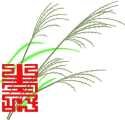In Standing Meditation, externally, there is no movement, yet internally, the qi and breath are moving. It is thus both passive and active, both Yin and Yang. The student does not try to do anything with the qi, he simply becomes aware of the quality of the qi: how it is moving, where it is blocked or free, whether it feels clear or turbid, smooth or coarse.
Qigong Master B. P. Chan* once asked me, "Why do you think we learn these complicated healing arts? You know, hold your hand this way, keep the feet parallel, breathe like this, visualize the qi moving from this acupuncture point to that . . ." He answered his own question. "I want to find out, is this hand really my hand? Is this leg really my leg?" In other words, the purpose of qigong is to understand "the four virtues (si de) of being human." What are these four virtues? How to lie down, sit, stand, and walk. It seems so simple, until we try it. Normally, when we are standing, the mind is walking, taking a journey to another time and another place, perhaps worrying about the dinner menu. When we are sitting, the body may be restless and ready to stand or move about. Even when we are lying down in bed, part of ourselves is doing something else; perhaps the breath is racing, unable to let go of the excitement of the day. Through the practice of Standing Meditation, we learn how to unify the body and mind so that every activity is savored with the whole being.
A disciple of Rikyu (1620-91), the founder of the Japanese Tea Ceremony, once asked him the same question, which Master Chan put to me. "What is the purpose of Tea Ceremony?" Why the complex and intricate choreography of step and gesture? Rikyu replied, "First we boil the water, then we prepare the tea, then we drink it, that is all." The disciple frowned. Rikyu continued, "Show me someone who can really do these things and I will become his disciple." The discipline of Tea, like qigong, is a discipline of wholeness and integration. Even a child of three knows what is required to drink tea or to stand, but few sages of eighty can put this into practice!
Thus, Standing Meditation is "a million-dollar secret." It is a secret because it is so obvious, so ordinary that we do not give it the attention it deserves. It is hidden as the air is hidden, or as the water is hidden to a fish. In the everyday qigong of Standing, we discover the deepest mystery and beauty. We turn Standing into a discipline in order to go more deeply into the quality of what is happening and to bring back to wholeness the confused, scattered, and lost parts of the body, mind, and soul.
* Grandmaster B. P. Chan was my teacher for Xingyiquan, Baguà Zhang, and Qigong till his death March, 2002.
From: 7'hc Way of Qigong by Ken Cohen: page 134
